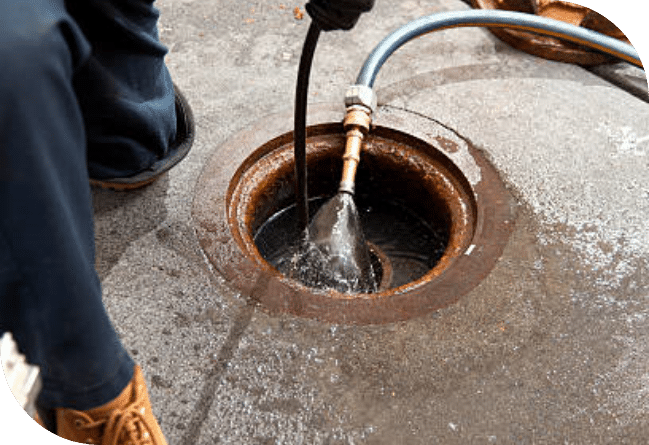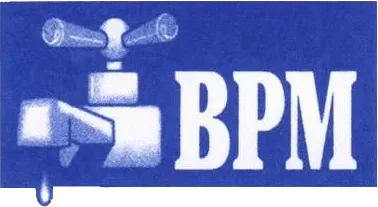Hydro Jet Drain Cleaning Adelaide
REQUEST A FREE QUOTE

Hydro Jet Drain Cleaning Services
Hydro jetting is suitable for a wide range of applications, from routine maintenance to addressing specific issues like persistent clogs, slow drainage, or
tree root intrusion. It's suitable for residential homes, commercial properties, industrial facilities, and municipal sewer systems. Hydro jetting provides a thorough and effective solution for maintaining clean and efficient plumbing systems, preventing costly repairs, and ensuring the longevity of your pipes.
What is hydro jet drain cleaning?
Hydro jet drain cleaning is a highly effective method for clearing blockages and cleaning the interior surfaces of plumbing pipes. This technique uses a high-pressure water jetting system to remove debris, grease, scale, and other buildups that can obstruct the flow of water. The process begins with a thorough inspection using a
CCTV camera to identify the location and severity of the blockage, which helps in determining the best approach for cleaning. Then, a high-pressure hose is inserted into the affected pipe through an access point. This hose is connected to a specialised nozzle and a high-pressure water pump. Water is then pumped through the hose and expelled through the nozzle at pressures typically ranging from 1,500 to 4,000 psi (pounds per square inch). The powerful water jet breaks up and flushes out blockages, including grease, roots, mineral deposits, and other debris, while also cleaning the interior walls of the pipes. This leaves them free of buildup and residue that can lead to future clogs. After the cleaning process, a second
CCTV drain inspection is performed to ensure the blockage has been fully removed and the pipes are clean and clear.
Benefits of Hydro Jet Drain Cleaning
- Thorough cleaning - Hydro jetting provides a comprehensive cleaning of the entire pipe, unlike other methods that may only punch a hole through the blockage.
- Non-invasive - This method is non-invasive and does not require digging or dismantling pipes, making it a convenient and efficient solution.
- Eco-friendly - Hydro jetting uses only water, avoiding the need for harsh chemicals that can be harmful to the environment and your plumbing system.
- Effective on tough blockages - It can effectively remove tough blockages caused by grease, roots, scale, and other stubborn materials.
- Preventive maintenance - Regular hydro jetting can help maintain the health of your plumbing system, preventing future clogs and reducing the need for emergency repairs.
Need Hydro Jet Drain Cleaning Adelaide? Call (08) 8261 0165
Frequently Asked Question (FAQ)
Got a question about hydro jetting? Read below or call us on (08) 8261 0165
How does hydro jetting work?
Hydro jetting is a powerful method for cleaning and clearing blockages in plumbing systems. The process starts with an initial inspection using a CCTV camera to identify the location and severity of any blockages or damage. Once the inspection is complete, the hydro jetting equipment is prepared, which includes a high-pressure hose, a specialised nozzle, and a high-pressure water pump. The hose is inserted into the pipe through an access point, and when the pump is activated, water is expelled through the nozzle at pressures typically ranging from 1,500 to 4,000 psi. The high-pressure water jets break up blockages such as grease, mineral deposits, debris, and tree roots, flushing them out of the pipe and restoring normal flow. Hydro jetting is safe for various types of pipes, including PVC, metal, and cast iron, and it is less invasive than mechanical methods. Suitable for residential, commercial, and industrial applications, hydro jetting serves as both a solution for existing blockages and a preventive measure for maintaining the health and efficiency of plumbing systems.
Is hydro jetting safe for my pipes?
Yes, hydro jetting is safe for most types of pipes, including PVC, metal, and cast iron. The high-pressure water used in hydro jetting is powerful enough to effectively clear blockages and clean the interior walls of pipes without causing damage. Unlike some mechanical methods that can be abrasive or chemicals that can be harmful, hydro jetting uses only water, making it a non-invasive and environmentally friendly solution. However, it is crucial to have a professional conduct a preliminary inspection to ensure the pipes are in good condition and suitable for hydro jetting.
When should I consider hydro jet drain cleaning?
You should consider hydro jet drain cleaning when you experience frequent drain clogs, slow drainage, or persistent foul odors coming from your pipes. It's also a highly effective solution if you have recurring backups in sinks, toilets, or showers or suspect tree root intrusion in your sewer lines. Additionally, hydro jetting is beneficial as a preventive maintenance measure, ensuring your plumbing system remains clean and efficient, thereby reducing the risk of future blockages and costly repairs. Whether for residential, commercial, or industrial properties, hydro jetting can address both immediate issues and long-term plumbing health.
How often should hydro jetting be performed?
The frequency of hydro jetting depends on your specific plumbing needs. For residential properties, an annual or bi-annual cleaning is typically sufficient. Commercial properties with high usage may require more frequent cleaning.
Can hydro jetting remove tree roots from my pipes?
Yes, hydro jetting is highly effective at removing tree roots that have infiltrated your pipes. The high-pressure water can cut through roots and flush them out of the system.
Is hydro jetting better than traditional drain cleaning methods?
Hydro jetting offers several advantages over traditional methods like snaking or chemical cleaners. It provides a more thorough clean, reaches further into the pipes, and is safer for the environment and your plumbing system.
How much does hydro jet drain cleaning cost?
The cost of hydro jet drain cleaning in Adelaide varies depending on several factors, including the severity of the blockage, the length of the pipes, and the specific requirements of the job. On average, you can expect to pay around $495 for the first 90 minutes of service, which typically includes labour, equipment fees, and GST.
Contact us for a free quote, as the price may vary depending on complexity and time.
Will hydro jetting solve my drain problems permanently?
While hydro jetting effectively clears existing blockages and cleans pipes, it cannot prevent future issues caused by misuse or external factors like tree root growth. Regular maintenance and proper use of your drains can help prevent recurring problems.
What is the difference between CCTV drain inspection and hydro jet drain cleaning?
CCTV camera inspection is used to diagnose and assess the condition of pipes by providing visual evidence and reports, making it ideal for planning repairs and maintenance.
Hydro jetting is then used to clean and remove blockages within the pipes, ensuring they are debris-free and maintained. Both methods are often complementary, with CCTV inspections conducted before and after hydro jetting to assess the need for cleaning and to check the effectiveness of the cleaning process.

